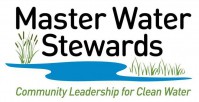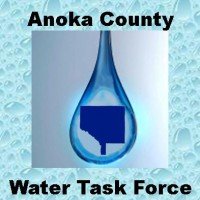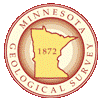A Public Information Meeting was held at Blaine City Hall (Wednesday, January 4, 2017) where Part 1 of the Wellhead Protection Plan was discussed.
Blaine is amending its Wellhead Protection Plan for its drinking water supply wells. The Minnesota Department of Health approved the amendment of Part 1 of the city’s plan. Part 1 (of 2 parts) includes information pertaining to:
- The delineation of the wellhead protection areas,
- The Drinking Water Supply Management Area boundaries, and
- An assessment of the vulnerability of the wells and DWSMAs.

Stefan Higgins (Blaine Assistant City Engineer) indicating the Drinking Water Supply Management Area for wells in the northwest quadrant of Blaine.
A complete copy of the Part 1 plan amendment containing the technical information used to delineate the wellhead protection area, drinking water supply management area, and aquifer vulnerability used by City wells is available at Blaine City Hall.
What is wellhead protection? Wellhead Protection is a way to prevent drinking water from becoming contaminated by managing potential sources of pollution in the area which supplies water to the City’s well. Much can be done to prevent pollution, such as the wise use of land and chemicals. Public health is protected and the expense of treating polluted water or drilling a new well is avoided.
What is a wellhead protection area? A wellhead protection area is a zone around a public water supply well managed to keep pollutants from rapidly reaching the community’s water supply. The area that is managed uses easily identifiable landmarks as boundaries (e.g. streets, property lines, ditches) called the Drinking Water Supply Management Area (DWSMA). The wellhead protection area is based on the minimum time (ten years) for a pollutant to reach the well.
Who’s Impacted?
A wellhead protection area includes hundreds to thousands of properties. Residents and businesses within a wellhead protection area are asked to cooperate with your water supplier to effectively protect our water supply without establishing additional ordinances or regulatory programs.
For more information about Blaine’s Wellhead Protection program contact Stefan Higgins at (763) 717-2722.




 January 5th, 2017
January 5th, 2017  knowtheflow
knowtheflow 














